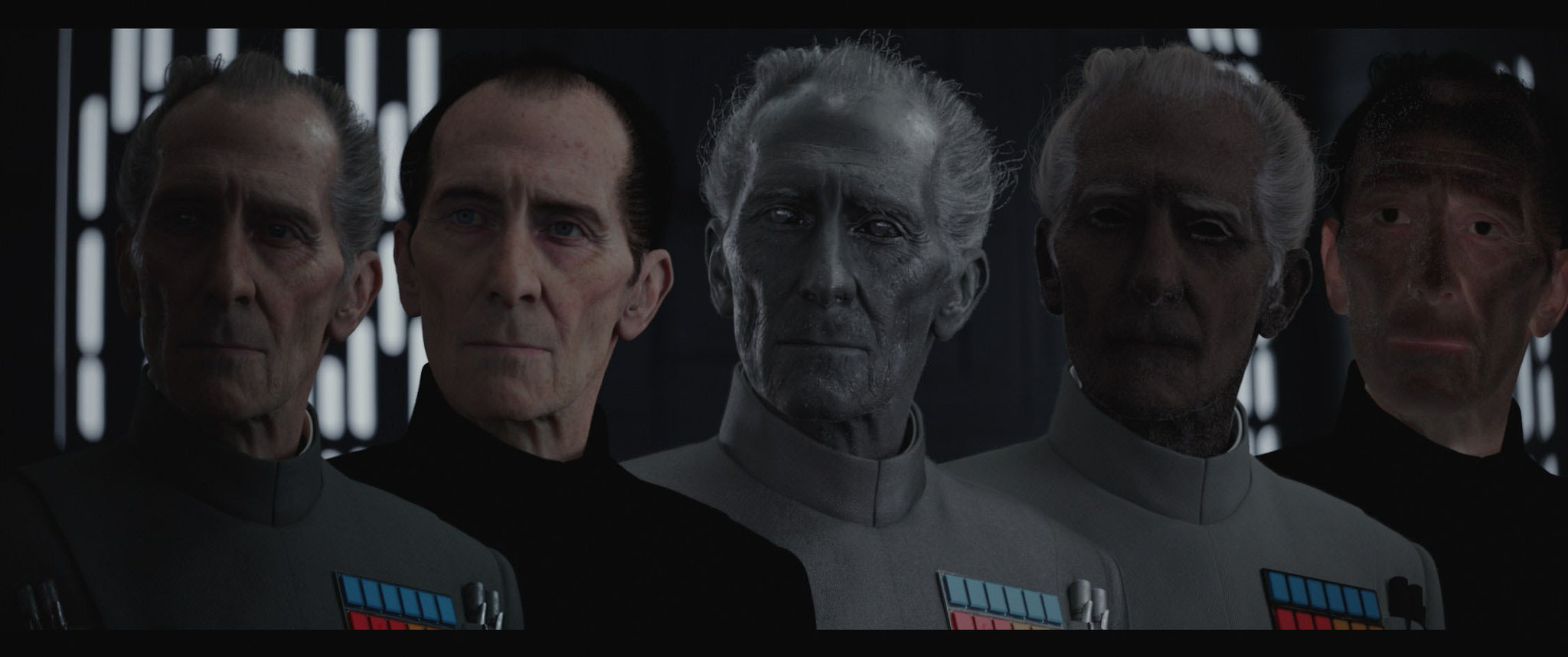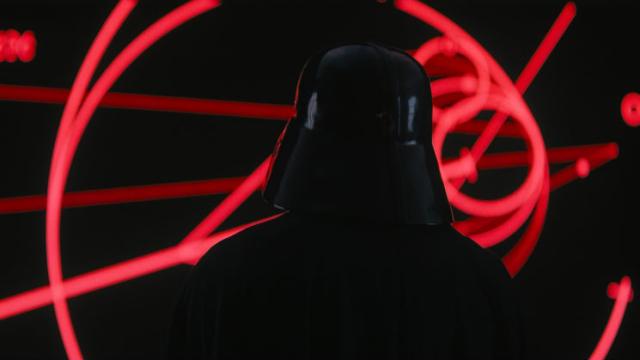It has been almost two weeks since the release of the latest Star Wars film, Rogue One, but much of the talk surrounding the movie is about characters from 40 years ago. Now, in an interview with The New York Times, several of Rogue One‘s most prominent contributors have given their accounts of the film’s controversial decisions.
A behind the head scene of Darth Vader from Rogue One. It did not end up in the movie. Image: Disney

Those decisions have to do with using digital effects to both bring back the late Peter Cushing as Grand Moff Tarkin and insert Carrie Fisher’s young Princess Leia in the film, just as both of them appeared in 1977’s A New Hope.
The first question is why you need to see those characters at all. Kiri Hart, a producer on the film and head of Lucasfilm’s Story Group, explained that in the case of Tarkin, he’s crucial to the story. “If he’s not in the movie, we’re going to have to explain why he’s not in the movie,” she said. “This is kind of his thing” — meaning, of course, the Death Star, which of course Tarkin ends up in charge of by the time A New Hope begins.
However, the filmmakers weren’t sure how the CG effect of Tarkin was going to look and, because of that, alternative solutions were planned. “We did talk about Tarkin participating in conversations via hologram, or transferring that dialogue to other characters,” said John Knoll, a producer on Rogue One who is also the CCO of Industrial Light and Magic.

The digital effect of Tarkin. Image: ILM via the NYT.
To complete the effect, actor Guy Henry was on set dressed as Tarkin, with full performance capture rigs on his head. “We’re transforming the actor’s appearance to look like another character, but just using digital technology,” Knoll explained. That data was sent to ILM, where they did their best to capture Cushing’s nuance. However, they quickly realised that was no simple task — especially after the realisation that the lighting in A New Hope was different than Rogue One. Both things upped the challenge of recreating Cushing/Tarkin considerably, but the team eventually felt like they hit a strong balance. It’s “a super high-tech and labour-intensive version of doing make-up,” Knoll said.
As for Princess Leia, Hart believes she’s an essential part of the story, too. “To deliver on that moment of hopefulness, that is really underscored by the fact that you do get to see her face,” Hart said. “That’s the best possible use of effects, to enhance the meaning and the emotion of the experience for the viewer.” Like Tarkin, Leia was played by an actor on set (Ingvild Deila) and then digitally altered to look like young Carrie Fisher.
Cushing’s estate approved the use of the actor’s likeness and though it seemingly raises many questions about ethics, Knoll believes its a technique that can and should only be used sparingly.
“It is extremely labour-intensive and expensive to do. I don’t imagine anybody engaging in this kind of thing in a casual manner,” Knoll said. “We’re not planning on doing this digital re-creation extensively from now on. It just made sense for this particular movie.”
You can read even more about this in the full Times article.
